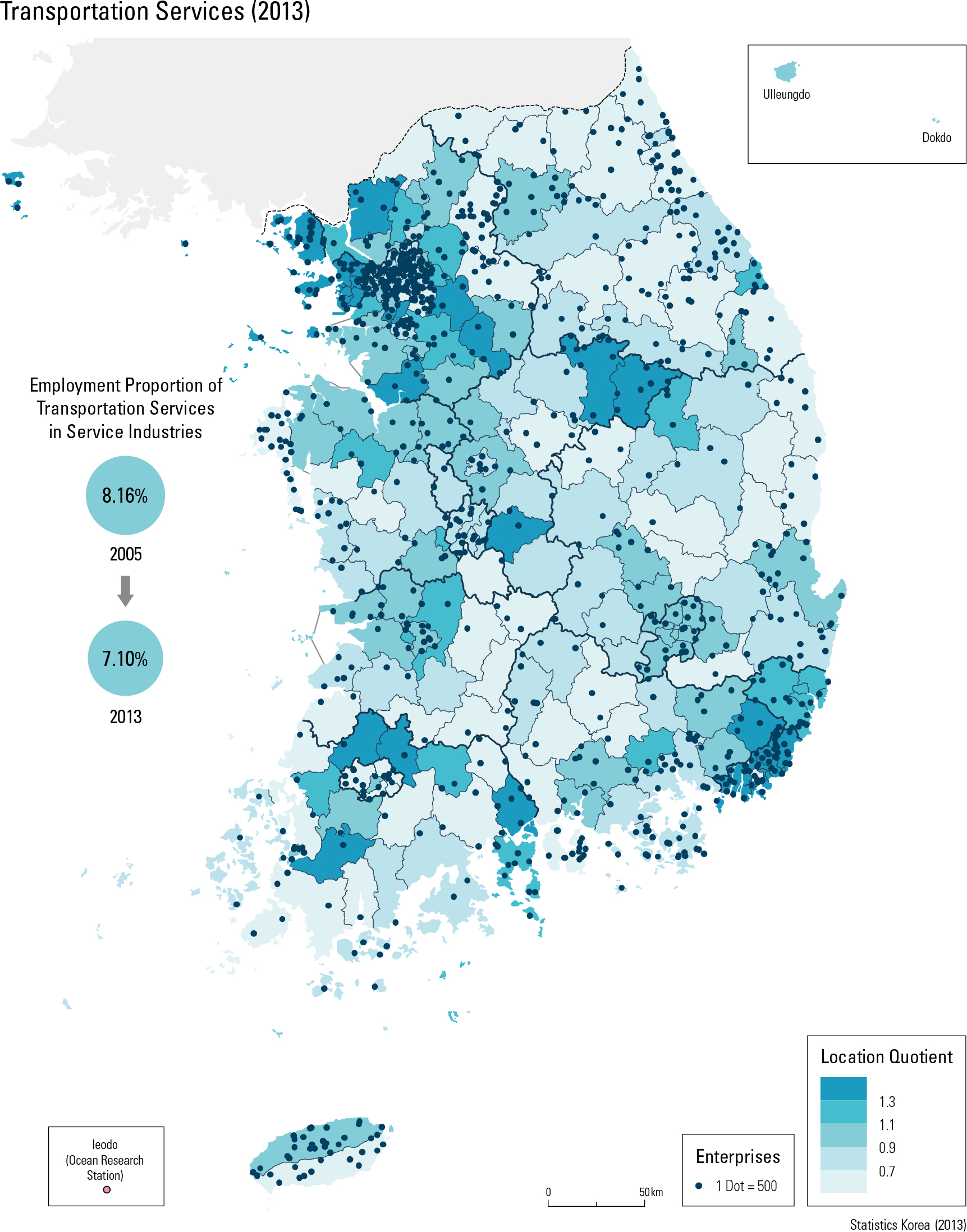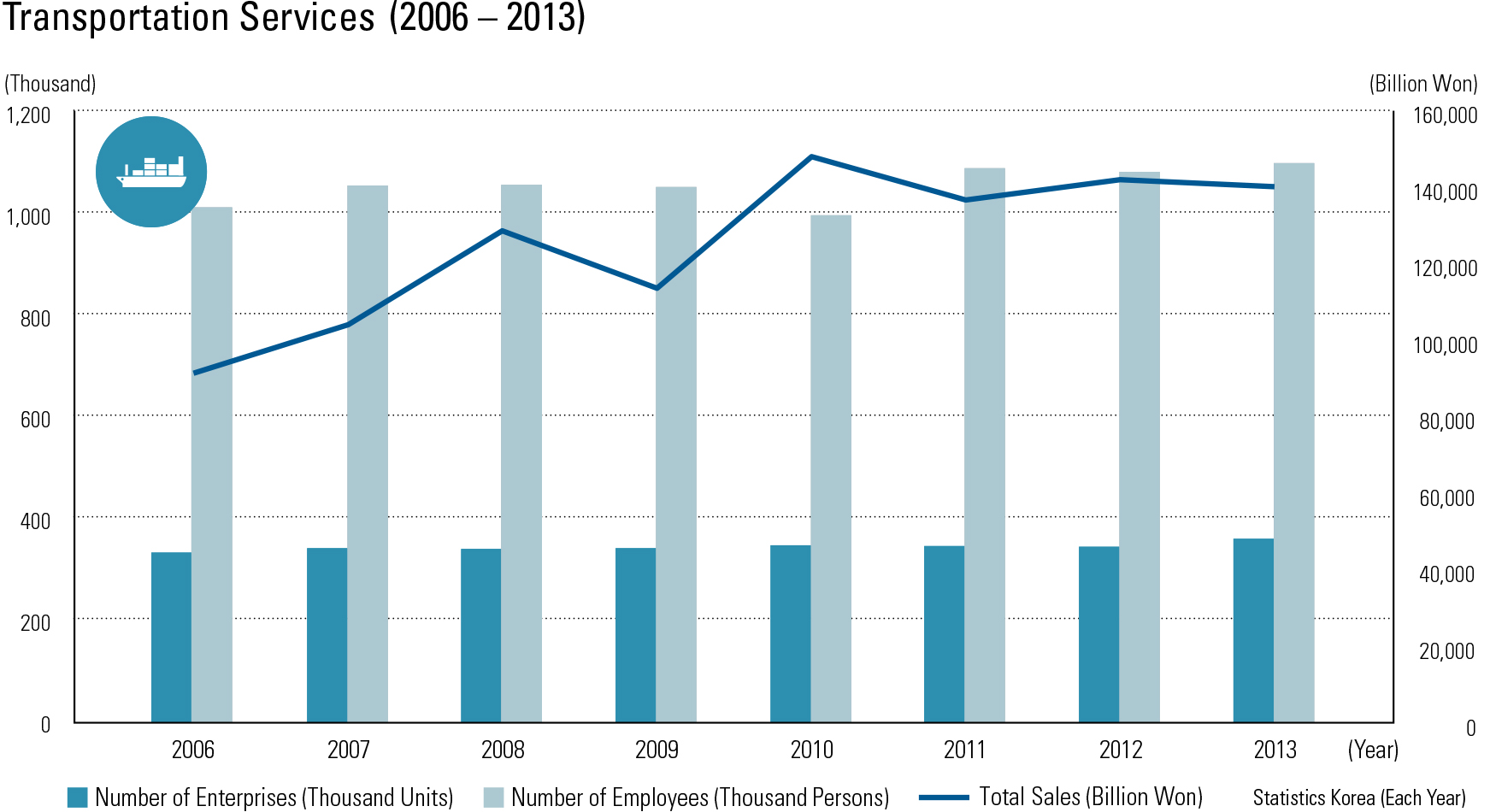English III
With economic growth, the flow of goods and people between regions has also increased. The transportation industry includes mainly businesses that transport passengers and cargo by all means of transportation; however, the industry also bene ts all of its supporting businesses, e.g., warehousing, terminal facilities, and its management, logistics, and distribution services. Similar to the tourism industry, the transporta- tion industry is rather sensitive to economic uctu- ations, so that in 2009, the momentary slowdown of the world economy depressed the transportation industry. In 2013, there were 360,000 transpor- tation business establishments, employing 1.094 million workers with total sales of 128 billion US dollars. The demand for transportation is higher in major cities where there is more demand for logistics dis- tribution; however, due to the higher land values in the hearts of cities and the traf c congestion, ware- houses are usually in the suburbs or exurbs. Recent progress in communication technology and knowledge-based informationization drives diverse demands for easy and instantaneous access to information and knowledge. Satisfying such demands are publication, video, broadcasting com- munication, and information services. In 2013, there were 36,000 business establish- ments with 516,000 employees and total sales of 73 billion US dollars. The total number of estab- lishments, employees, and sales has steadily in- creased, sometimes at a fast pace, regardless of the recent economic crisis. Although access to knowl- edge and information is easily available anywhere and anytime, these business services tend to be concentrated heavily in major cities.
page_2 |




